About the project
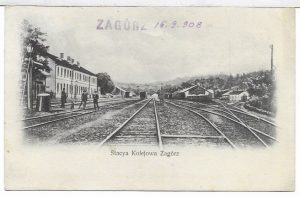
Dear Sirs, This publication has been produced within the framework of the project entitled „We are opening the gates of the Carpathians. Cultural heritage of the Carpathian arch in a new form” financed from the EU funds of the Interreg V-A Cooperation Programme Poland – Slovakia 2014-2020. The essence of this cross-border initiative implemented by: Bieszczady Poviat (PL), Zagórz Municipality (PL), the City of Medzilaborce (SK) and the City of Giraltovce (SK) is to protect and develop the cultural and natural heritage of the Carpathian Foothills area. As a result of the activities undertaken by the partner municipalities, new tourist attractions were created across the Polish-Slovakian-Ukrainian border. One of the most important communication axes of the area is formed by railway lines No. 107 and 108, which meet in Zagórz and lead respectively: southwards (through the Łupków tunnel) to Medzilaborec in Slovakia and eastwards (through UstrzykiDolne and the border crossing in Krościenko) to Chyrów in Ukraine. The unique historical and natural resources found in this multicultural area make it an extremely fascinating and attractive area well worth a number of tourist excursions. Train travel in this area became possible already in the second half of the 19th century. The railway arrived in Zagórz in 1872, very quickly changing the small agricultural settlement into a dynamically developing transportation hub of strategic importance, especially during World War I. In that turbulent time the legend of the Defenders of Zagorze Railway Junction of 1918 was born, which is the historical and social basis of the Zagorze part of the project presented here. The tourist product created through the project activities described in this brochure provides an opportunity to make rail transport a tool for deepening good neighborhood relations and the socio-economic development of the border areas of Poland, Slovakia and Ukraine.
On the Carpathian Trail
ZAGÓRZ MUNICIPALITY
www.zagorz.pl
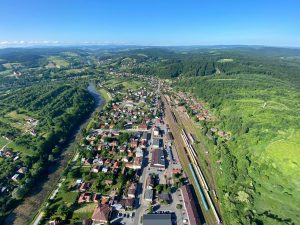
Podróży Bieszczader.pl
Our journey through the Polish, Slovakian and Ukrainian borderlands begins in the valley of the Osława river, at the junction of the Low Beskid and the Western Bieszczady mountains. In this enchanting land there is Zagórz – the capital of the commune of over 13 thousand inhabitants with colourful history and rich development potential. Zagórz was first mentioned in 1412 as a village. Currently, it is the administrative and economic centre of one of the eight communes located in the Sanok county in the Podkarpackie voivodship. On the area of the Special Economic Zone „Euro – Park Mielec” located in Zagórz there are plants employing about 2000 workers. Other potential investors are offered by the local government of Zagórz complex developed investment areas and attractive conditions of conducting business activity. Due to its location the city is rightly called the gateway to the Bieszczady Mountains. In Zagórz communication routes leading to Ukraine and Slovakia cross. From the railway station in Zagórz the priest Karol Wojtyła – later pope – St. John Paul II set off on his wanderings in Bieszczady many times. In addition to the above-mentioned mini open-air railway museum, numerous monuments of religious architecture prove the cultural richness of the Zagórz city and Commune including the monumental, eighteenth-century ruins of the above-mentioned Carmelite Barefoot Monastery. The remains of the Carmelite seat rise majestically on the hill called ZagórzMarymont. On one of the twin towers of the former monastery temple there is a viewing terrace, and the recently rebuilt and appropriately adapted monastery foresterium (the former guest building) becomes the seat of a modern Cultural Centre. The newly created facility will include, among others: a virtual reality room, a projection and film room, an exhibition and conference room, a tourist information point, art studios, rooms for the promotion of regional products and a restaurant. The modern infrastructure will be used, among other things, to popularise local historical themes related to the activities of the Bar Confederation. The 250th anniversary of the initiation of this patriotic uprising, which occurred in 2018, was commemorated in Zagórz with the unveiling of a unique monument, located on a square in the city centre. This is the only monument in Poland showing the figure of the Unknown Bar Confederate standing next to his mount – a faithful companion of the soldier’s wanderings. By the road leading to the monastery hill, there is the 18th century parish church of the Assumption of the Blessed Virgin Mary. Inside the church, which in 2007 gained the status of a shrine to the Mother of New Life, you can admire the late Gothic painting of the Annunciation. As already mentioned, among the votive gifts exhibited in the church is the original Cross of the Defenders of the Zagórz Junction. The Sanctuary and the monastery complex is connected by a tract, on which the Way of the Cross was arranged in the form of Bieszczady Open-Air Sculpture Gallery. The specificity of the Zagórz Commune is multiculturalism reflected, inter alia, in the art and architecture of the Orthodox church. The most valuable monuments of this kind include the Church of the Encounter of the Lord in Morochów built in 1837.
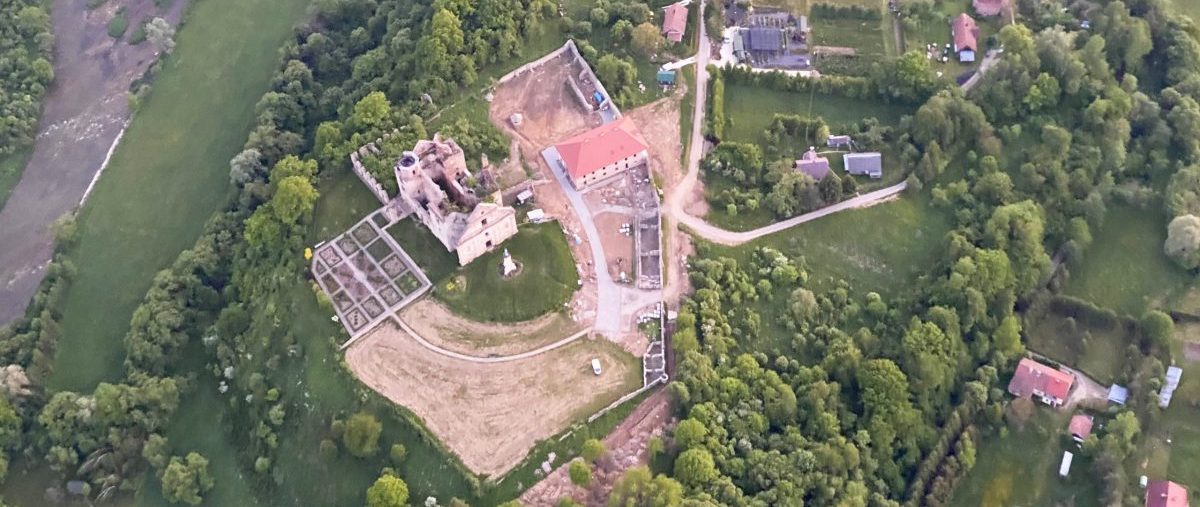
Bieszczader.pl
In Zagórz the Zakucie ski-jumping complex is located. The facilities located there as the only ones in Podkarpacie are equipped with igelite mats allowing year-round training.
The main rivers of the Zagórz Commune are San and Osława. Fishing enthusiasts will certainly be interested in local fisheries abounding in: trout, grayling, barbel and huchen. The last of these species is particularly valuable. In Poland, huchohucho is found only in three rivers: The San, Poprad and Dunajec. This majestic fish, also known as the Danube hucho, Danube salmon and Queen of the San, is listed on the IUCN Red List as endangered, which means that the risk of it becoming extinct in the wild is very real. In order to prevent such a possibility, as well as to promote broadly understood ecological education, the Bieszczady Huchen Cup has been organised in Zgorzelec annually since 2011. This unique fishing competition conducted with no kill method is accompanied by lectures and workshops on ecological issues gathering international audience. The huchen is very often called the queen of the San. In the case of the Osława, the common nase (Latin: Chondrostoma nasus) deserves such a title, whose extremely spectacular spawning that lasts from April to May, every year gathers numerous crowds of observers. Similar objectives and formula as the „Bieszczady Huchen Cup” has „Carpathian Roaring” – an annual festival of hunting brothers held in Zagórz since 1998. The event inspired by the mating season of deer (hence the name „roaring”) with each edition gathers more and more enthusiasts of the Carpathian nature, which one of the most important attributes are undoubtedly forests. The area of the Zagórz Commune is characterized by high forest cover (about 41.8%) with a dominance of such tree species as fir, beech, pine and spruce. One of the forms of local tree stand protection are nature monuments. There are 16 such objects in the Zagórz commune. In the vast forest complexes, in addition to the aforementioned deer they are also inhabited by, among others: bears, European bison, lynxes and wolves.

The Zagórz Commune has favourable conditions for hiking and biking. A rich offer in the field of horseback riding is provided by horseback riding centre in Łuków with an indoor riding school.

The Zagórz Commune is a unique space for many reasons. Exploring the rich cultural and natural values of the Zagórz area, as well as the southeastern part of the Polish-Slovak border region will certainly facilitate the mobile tourist application available on the website: www.dukladestination.com
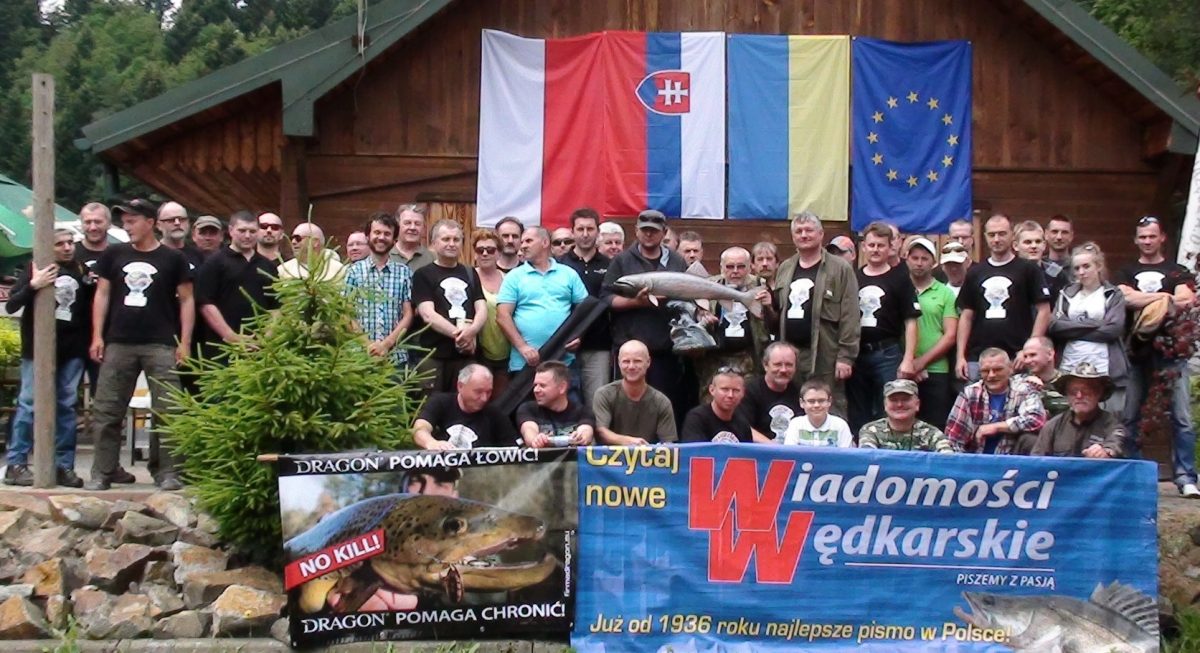
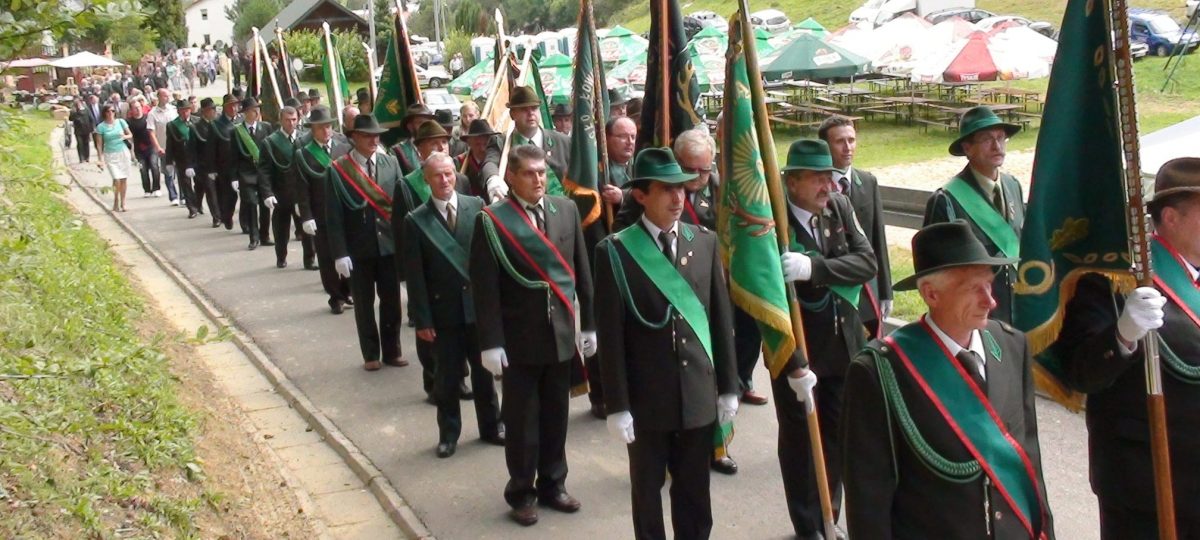
THE TOWN OF MEDZILABORCE
www.medzilaborce-urad.sk
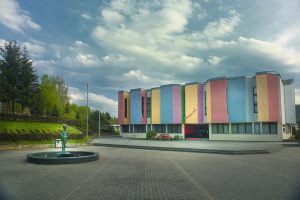
The town of Medzilaborce is situated in the north-eastern Slovakia, in Prešov region, at the confluence of the Laborec and Vydraňka rivers. The earliest mention of Medzilaborce dates back to the donation deed of the Hungarian King Louis the Great of 7 January 1347, where it is listed among the possessions of the Druget family, who ruled the town until the 16th century. The later history of Medzilaborec reflected the global processes and events outlined in the historical outline of this publication. These included the construction of a railway line running through the town, as well as both World Wars – especially the first one. Today, Medzilaborce is most commonly associated with the Andy Warhol Museum of Modern Art (www.muzeumaw.sk ). Established in 1991, it is now a supra-regional museum and gallery institution promoting the work of the king of pop art, as well as current trends in contemporary art. Thanks to the project entitled „We are opening the gates of the Carpathians. Cultural heritage of the Carpathian Arc in a new form”, the museum premises have been enriched with a permanent exhibition from the period of World War I entitled „Fighting in the Carpathians – Medzilaborce 1914/1915”.

The exposition contains among others: soldier mannequins in historical uniforms, dioramas, information boards, display cases with artefacts, models of aeroplanes and mountain cannons, a kiosk with all the information in Slovak, Polish, Russian, English, Hungarian and German languages. The exposition is constantly monitored and covered by a security system. The exhibition is complemented by a website available at www.1914-medzilaborce-1918.sk. Enjoying the rich cultural and tourist offer of Medzilaborce, which regained the status of a district town in 1996, is significantly facilitated by the international train called „WojakSzwejk” that has been running on holiday weekends since 2016. The railway connection between Rzeszów – Medzilaborce – Sanok – Medzilaborce – Rzeszów creates an opportunity for safe and comfortable travel along the Polish-Slovak border, following the trail of unique architectural and natural objects located on the historical route of the First Hungarian-Galician Iron Railway. The sculpture of the Good Soldier Svejk, gallantly saluting all passengers using the main railway station in Medzilaborce, reminds us of the turbulent period of its greatest strategic importance.

THE TOWN of GIRALTOVCE
www.giraltovce.sk
Giraltovce is located about 60 kilometres south-west of Medzilaborec in Eastern Slovakia, in Prešov region, in Svidník district. The town was mentioned for the first time in 1416. It has no railway connection, but the strategic road connection caused that the town lying on the river Topľa was often a theatre of spectacular historical events. In 1805, after the lost battle with Napoleon at Austerlitz, a part of the army of the Russian Prince Kutuzov was placed in Giraltovec. From the middle of the 19th century until 1960 Giraltovce was the seat of the district. A new chapter in its modern history occurred in November 1990 when the first local government elections were held. Giraltoviec community elected their representatives to the city council and mayor. In 1993 Slovakia became an independent country and its integration into the European Union in 2004 opened up numerous support programmes for local authorities. EU funds, acquired with great efficiency, have long had a very positive impact on the contemporary image of Giraltoviec. Among the many fruits of cross-border cooperation between Slovak local governments from the Topľa river with Polish partners is a mobile application presenting the tourist attractions of Giraltoviec and the Bieszczady Poviat.
The tool is available on the website http://www.bieszczadzki.pl/strona-2205-bieszczady_poloniny_dwie_krainy_jedna.html or after scanning the qr-code. A creative continuation of cooperation between the two partner municipalities became the project entitled „We are opening the gates of the Carpathians. The cultural heritage of the Carpathian Arc in a new form”. Thanks to it, on the basis of a thoroughly renovated building of the former National Committee in Giraltovce a Slovak-Polish House was created, in which rooms for the presentation of the cultural heritage of the project partners were arranged.

THE BIESZCZADY POVIAT
www.bieszczadzki.pl
The Bieszczady poviat covers the most southeastern part of Poland. Its southern and eastern edges neighbouring with Ukraine are at the same time a fragment of the external border of the European Union. The Bieszczady peak Krzemieniec (Kremenaros) rising 1221 metres above sea level is the place where the borders of Poland, Ukraine and Slovakia meet. The Bieszczady poviat is one of the most beautiful regions of Podkarpacie, and the characteristic landscapes with BieszczadyPołoniny make it one of the most original mountain corners of our country. The main river flowing through the county is the San, which has its source in the area of Uzhok Pass. The seat of the Bieszczady poviat is UstrzykiDolne, which, because of its well-developed ski infrastructure, is often called the winter capital of Podkarpacie. The town lies on the Strwiąż River, the only Polish river belonging to the basin of the Black Sea. There are two artificial reservoirs on the San River. The larger of the two, Solina Lake, is located partly within the Bieszczady district. Access to Solina Lake in the vicinity of Chrept and Teleśnica creates convenient conditions for rest and recreation. The distinctive feature of the Bieszczady Mountains is the local nature. In the Bieszczady there is a different system of flora floors than in other Polish mountains. The contemporary Bieszczady flora includes over 900 species. There are 27 species of east Carpathian endemics. Fauna of Bieszczady comprises 51 species of mammals (including bear, European bison, lynx, wildcat, deer, wolf), about 150 species of birds, 7 species of reptiles, 10 species of amphibians and more than 25 species of fish. Popularisation of these rich natural values is carried out by the Museum of Nature, operating within the Centre of Ecological Education of the Bieszczady National Park in Ustrzyki Dolne.

A very valuable development capital of the Bieszczady region is its multicultural history. The Bieszczadzki Poviat has led the project „We are opening the gates of the Carpathians. The cultural heritage of the Carpathian Arc in a new form”. Under this project the first stage of space development around the old oil refinery „Fanto” in UstrzykiDolne was completed, where the Bieszczady Centre of Cultural Heritage will be built. The main building of the planned Centre was erected in 1935. The history of the former refinery dates back to 1887, when Józef Walter and Co. began building the first small oil distillery in UstrzykiDolne. Due to the growing demand for paraffin, the company was constantly developing and in the interwar period it belonged to the company „Fanto”. After the end of World War I, the owners started to expand and modernise the plant, which took place in the years 1929-1935. The 1930s and the Great Depression did not spare the Ustrzyki refinery and for economic reasons the Oil Cartel decided to close the plant. In order to take care of the inhabitants, the town’s authorities set up the 'Pilak’ woodworking company, which again employed workers from the refinery. In the 1960s, the buildings of the „Pilak” wood products factory became the property of the State Forests, and later the State Treasury. Unused for years, the industrial complex was gradually degrading until it was taken over by the Bieszczady County. The Bieszczady Cultural Heritage Centre to be established in UstrzykiDolne is to be the target driving force for development of tourism industry in the Bieszczady region stimulating growth of tourism attractiveness of the whole Podkarpacie. Achieving these ambitious objectives would be significantly facilitated by the reactivation of railway connections to UstrzykiDolne, for which the authorities of the Bieszczady Poviat have been consistently striving.
These are the key elements of the project entitled „We are opening the gates of the Carpathians. Cultural heritage of the Carpathian arch in a new form”, which was implemented in the extremely unfavourable and unprecedented realities of the COVID 19 pandemic. Wishing you good health, we hope that this publication will be helpful for you in enjoying the rich and varied tourist values of the Polish-Slovak-Ukrainian borderland.
Sources:
- Central Military Archives – Military Historical Office
- Jerzy Tarnawski, The Dawn of Freedom over the Osława and San. 90. Anniversary of Regaining Independence. „Verbum”, pp. 10-11, No. 9 (57) / 2008 of 26 October 2008. Parish of the Assumption of the Blessed Virgin Mary in Zagórz.
- Adam Pęzioł, Karpacki Euroregion – 25 years later. With a view to the future. „Limes” Studies and Materials from the History of Central and Eastern Europe pp. 115-124 no 11/2018
- Szymon Jakubowski The beginnings of the Hungarian-Galician railway, www.podkarpackahistoria.pl 13.05.2020
- Szymon Jakubowski The monastery in Zagórz, www.podkarpackahistoria.pl 13.05.2020
- Materials (texts and photos) provided by the project Partners.
